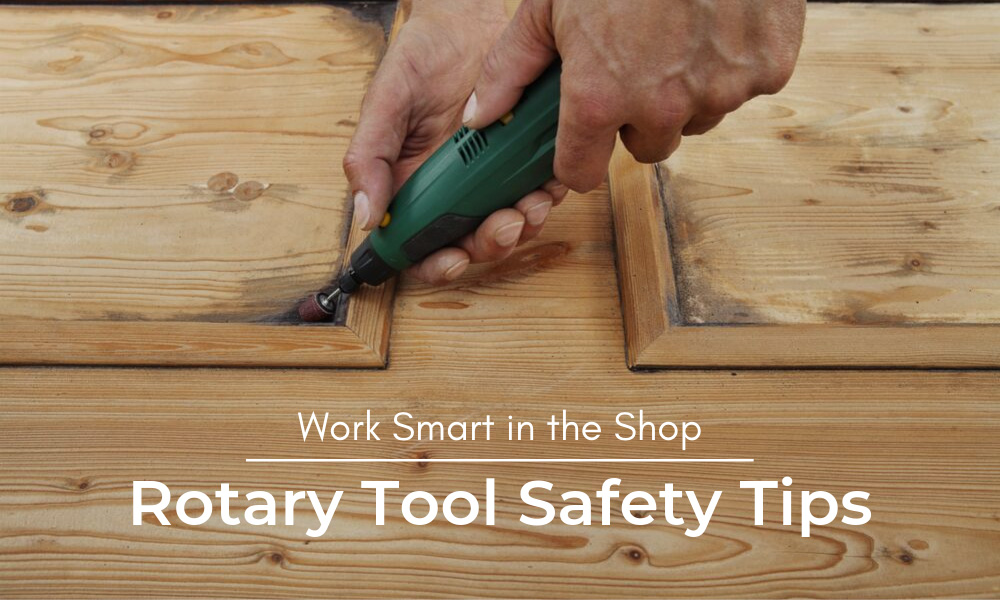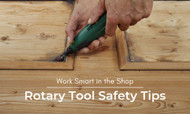Work Smart in the Shop | Rotary Tool Safety Tips
24th Oct 2023

Whether they’re electric or pneumatic, rotary tools can be dangerous if not used in a safe, responsible manner. Rotary tools tend to be on the small side, but that doesn’t make them any less dangerous. The high speed at which the tool spins requires caution. In the blink of an eye, you could lose a finger, or a shard could hit an unprotected eye. Brush up on some rotary tool safety tips so that you’re safe and productive.
Wear Eye Protection
Rotary tools remove material—whether it’s metal, wood, or ceramic—at high rates of speed. Prevent any shards from getting into your eyes by wearing safety glasses. Excessive sparks may require more protection, in which case you should get a face shield. If you work in a shop, your employer should provide this protection for you. If you’re a hobbyist working at home, on the other hand, don’t ruin the fun—make sure to invest in this crucial protection.
Inspect the Attachments
Never use worn or damaged attachments on your rotary tool. Before attaching diamond abrasive sheets to the spindle for polishing, for example, make sure they’re in good condition. Check sanding drums for cracks, abrasive wheels for chips, and all other accessories for tears and excessive wear. You’ll also want to make sure to securely fasten any attachments so that they don’t detach or get wrapped up in the tool.
Secure the Workpiece
Never hold the piece you’re working on in one hand and the tool in the other. Instead, you should secure anything you’re working on in a vise or with clamps. This way, the piece won’t be able to shift or slide while you’re working on it. If you hold it, then the attachment will get too close to your hand and increase the risk of an injury.
Beware of Kickbacks
A kickback is a sudden reaction by the tool to a pinched or snagged wheel. This results from improper use or poor maintenance of the tool. Failure to clamp the tool will also increase the likelihood of kickbacks. Keep a firm grip on the tool and avoid snagging or bouncing the tool to minimize the risk of kickback.
Handle with Caution
Never set the tool down while the wheel is still moving. Wait until the wheel has come to a complete stop before setting the tool down on the workbench. If the wheel is still moving, it could catch on the surface and take the tool to the floor. Depending on the attachment, grooves and scratches can also build up on the workbench, creating an uneven work surface.

